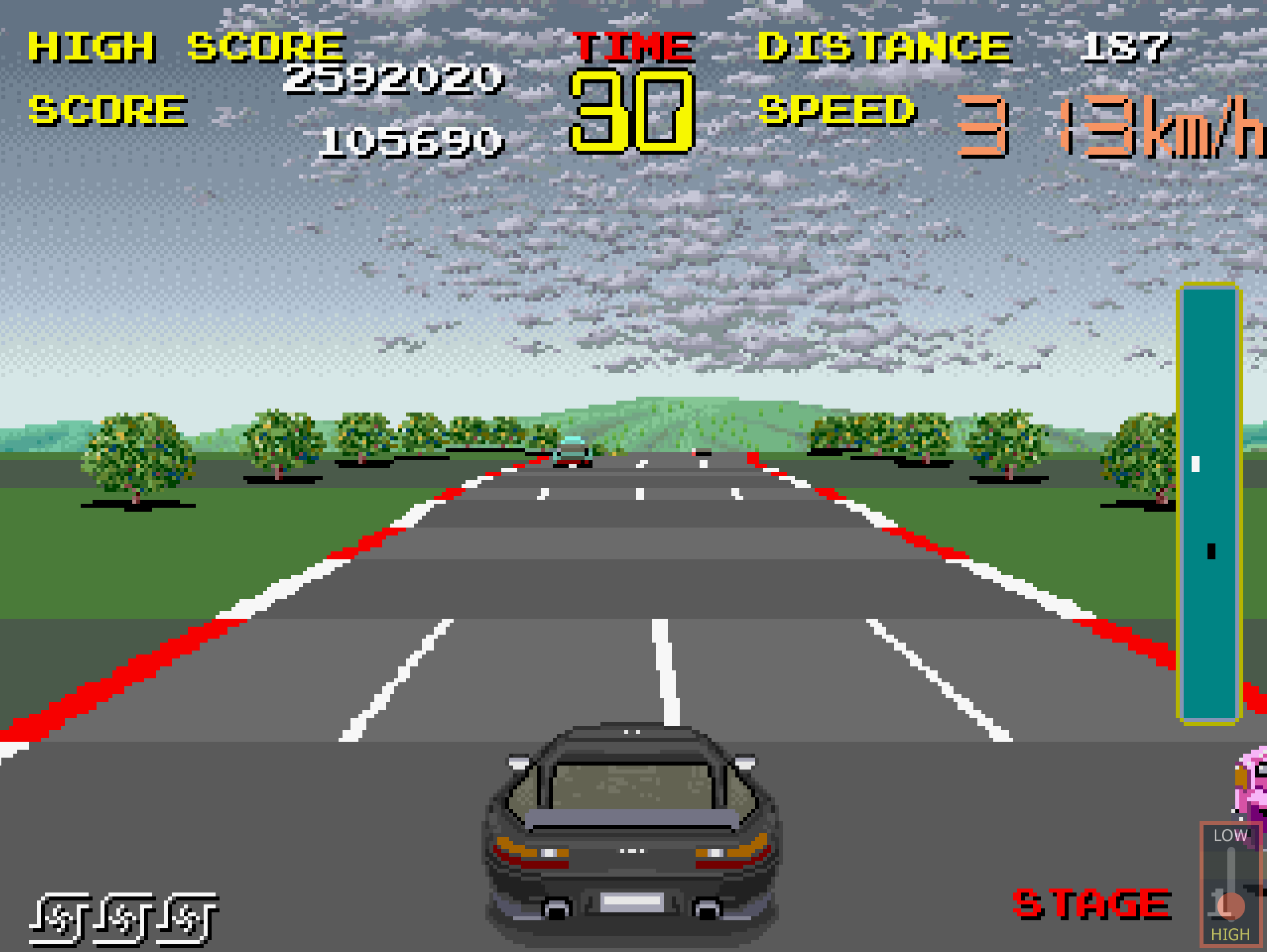Introduction
Released by Taito in 1988, Chase H.Q. is an arcade racing game with a twist—players take on the role of police officers in hot pursuit of fleeing criminals. Combining fast-paced driving with mission-based action, the game introduced a new kind of racing experience that mixed arcade thrills with law enforcement fantasy. With sharp visuals, voice effects, and cinematic urgency, Chase H.Q. became one of Taito’s most recognizable hits of the late 1980s.
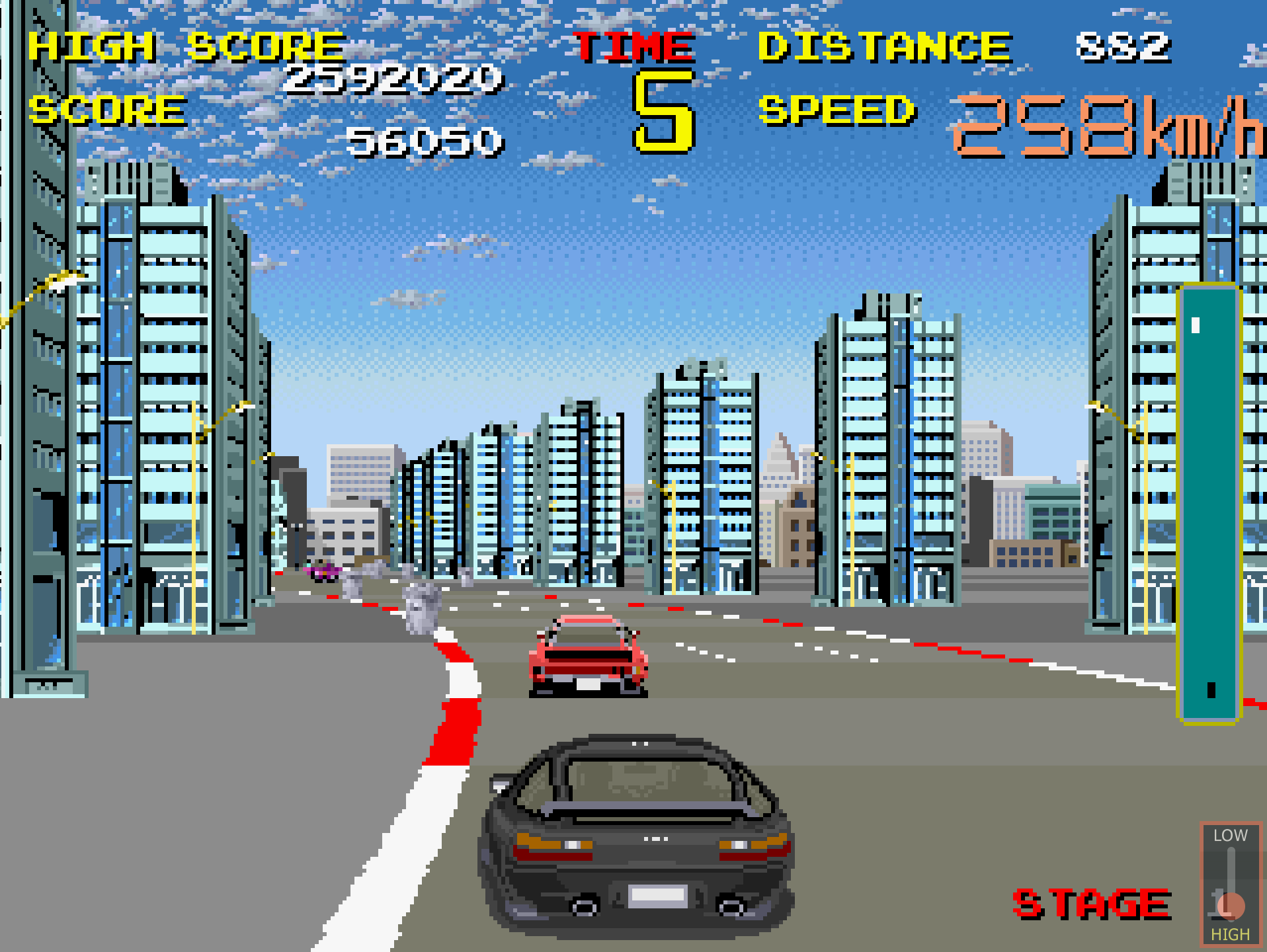
Development and History
- Developer: Taito
- Publisher: Taito
- Release Date: 1988
Designed during a period when arcade racers were evolving from circuit-style formats into more narrative-driven games, Chase H.Q. brought a unique hook: chase down criminals, ram their cars off the road, and save the day. The development team implemented sprite scaling and parallax scrolling to create the illusion of 3D road depth, similar to what Sega had done with Out Run, but with its own action-packed police twist.
The game features digitized voice samples and a catchy soundtrack, along with a series of criminal targets to apprehend over different highway settings.
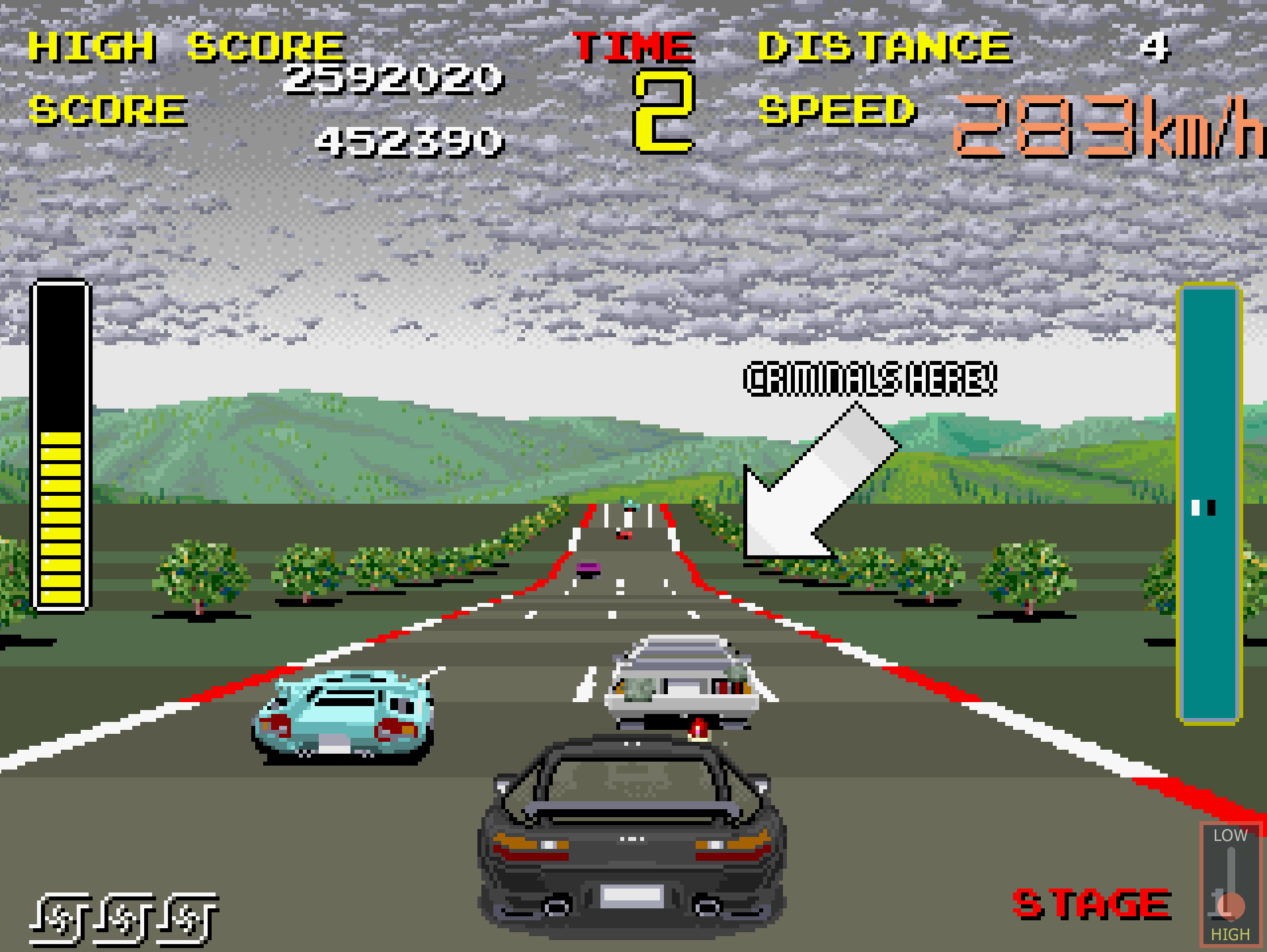
Gameplay Video
Gameplay and Mechanics
Core Gameplay
Players control police officer Tony Gibson, who—with his partner Raymond—receives calls from “Nancy” at Chase H.Q. headquarters to pursue and capture suspects.
- Turbo Boosts: Players have a limited number of nitro boosts to close distance quickly.
- Criminal Pursuits: Once a suspect is caught, players must ram their vehicle until it’s disabled.
- Timer Pressure: Each chase is time-limited, adding urgency to every maneuver.
- Multiple Stages: The game features varied urban and rural environments, each with a different target.
Challenges
- Traffic Navigation: Players must weave through civilian traffic at high speed.
- Limited Boosts: Strategic use of turbo is critical to catching suspects in time.
- Collision Risks: Crashing into vehicles or obstacles slows progress significantly.
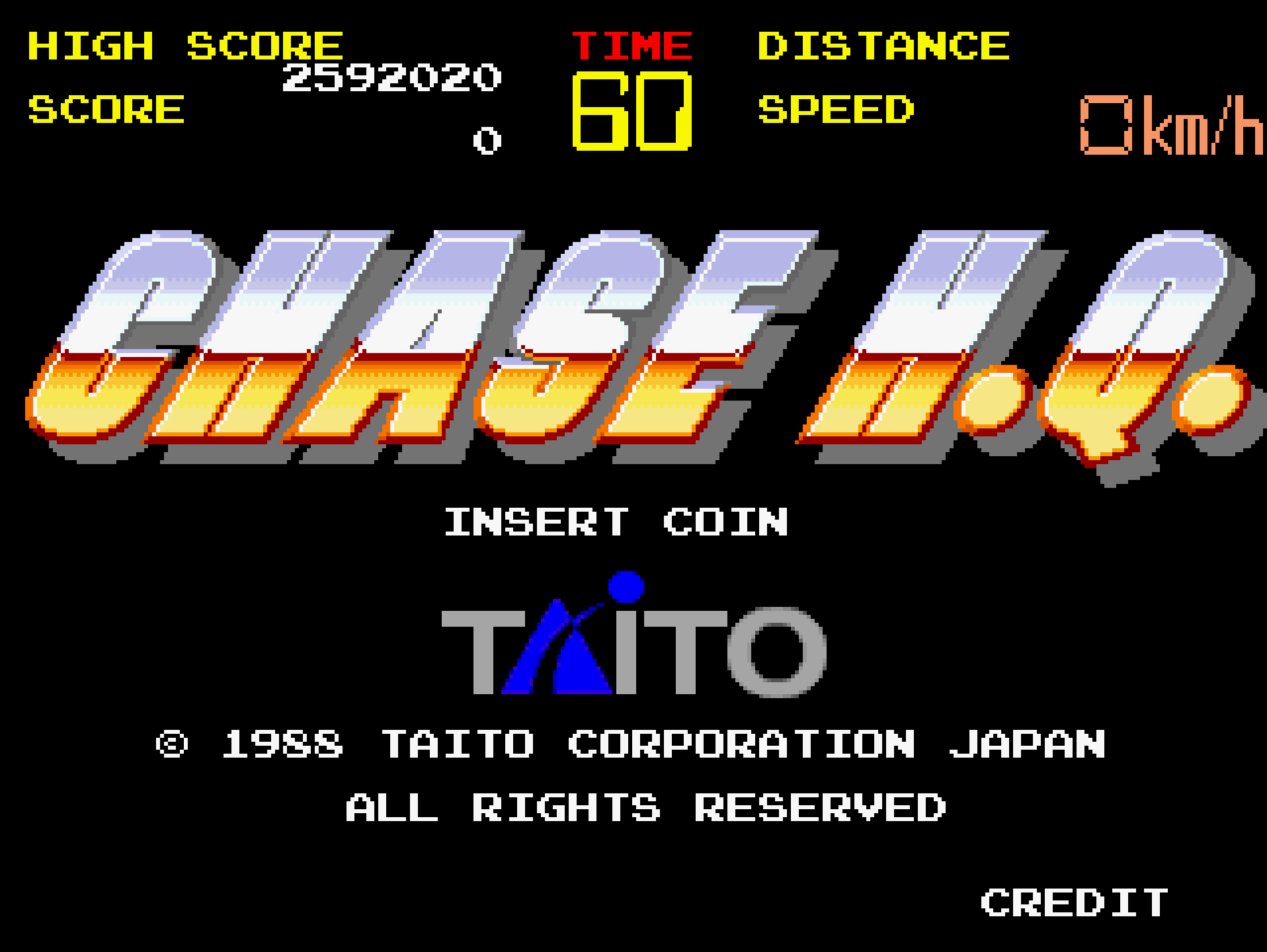
Cultural Impact and Legacy
- Arcade Success: One of Taito’s top-grossing arcade games, especially in Europe and Japan.
- New Genre Hybrid: Blended racing with action and storytelling, influencing future titles.
- Sequels and Ports: Followed by Chase H.Q. 2, Super Chase: Criminal Termination, and multiple home ports.
- Influence on Later Games: Inspired games like Driver, Need for Speed: Hot Pursuit, and others.
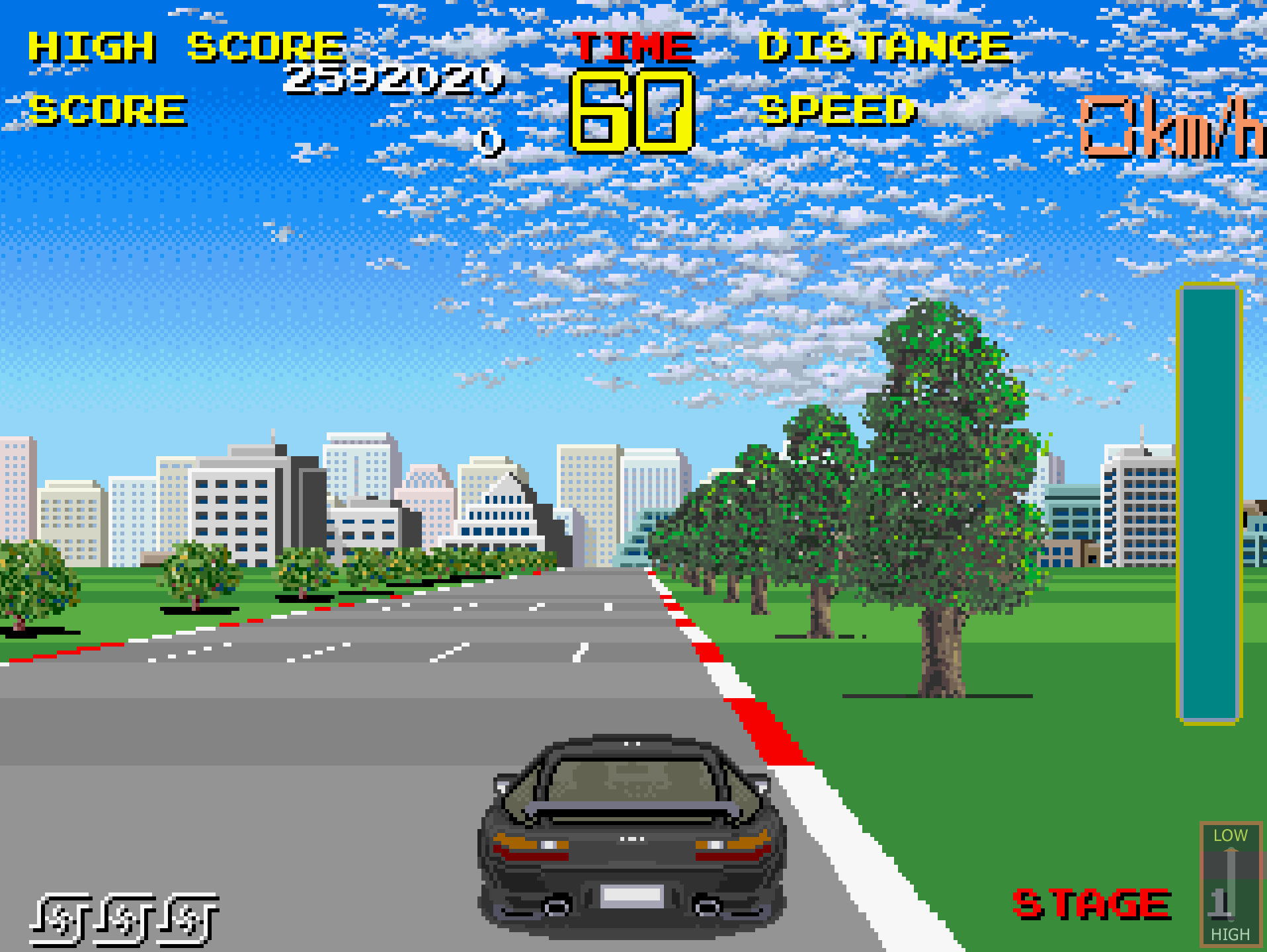
Fun Facts
- “Nancy” at H.Q.: The dispatcher character became iconic and appeared in later Taito games.
- Car Design: The main vehicle is a Porsche 928-style sports car, unofficially modeled.
- Cabinet Options: Released in both upright and sit-down configurations.
- Voice Samples: Included digitized voices like “Let’s go Mr. Driver!” and “This is Nancy at Chase H.Q.!”
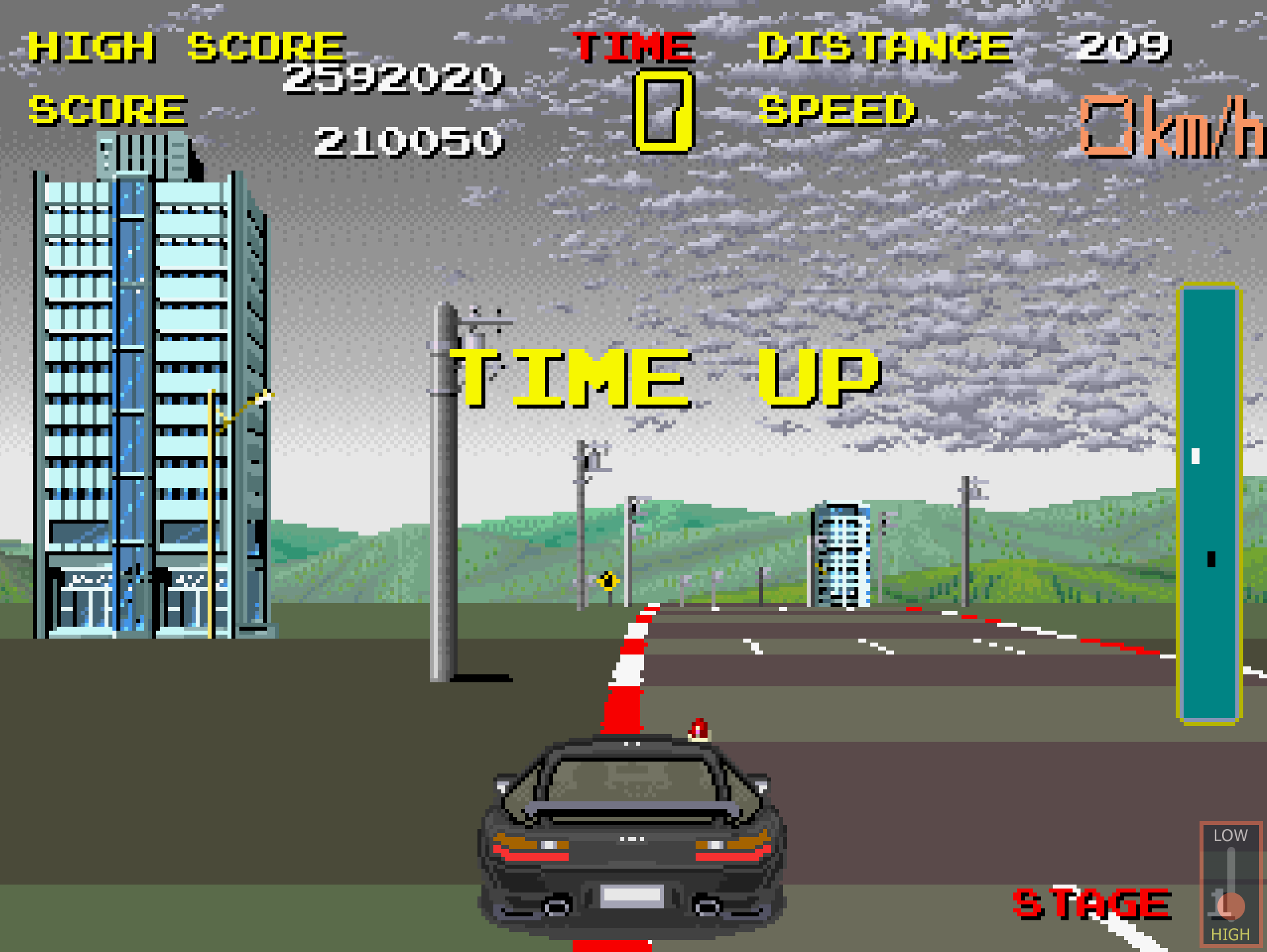
Conclusion
Chase H.Q. delivered a fresh, cinematic spin on the arcade racing formula. With its police chase theme, memorable characters, and high-octane gameplay, it became a defining title for Taito and an arcade staple. It set the foundation for story-driven racing action long before it was common.

